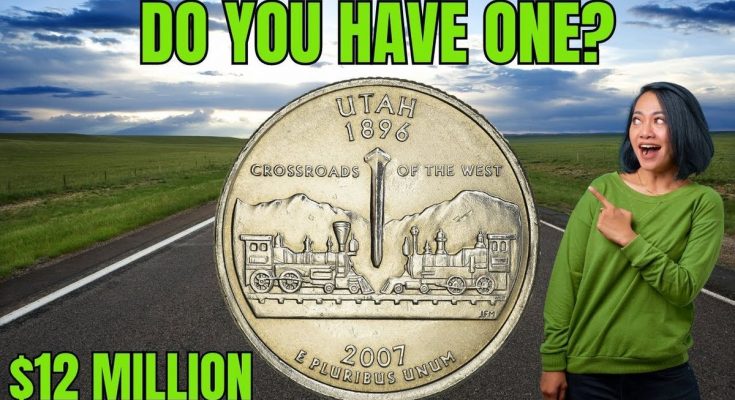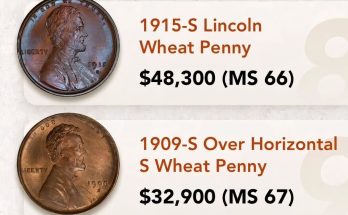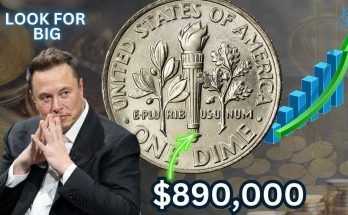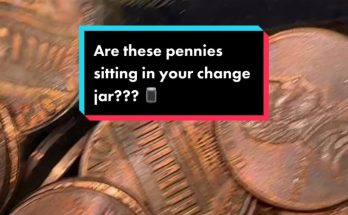Imagine reaching into your old coin jar or an inherited collection and finding a single quarter dollar coin that holds the secret to a life-changing fortune. It sounds like a legend, but for a select few rare U.S. silver quarters, this is a verifiable reality. We’re not talking about just a few hundred or a few thousand dollars; we’re diving into the world of numismatic treasures where single quarters have sold at auction for prices that rival luxury sports cars and even half a million dollars. These aren’t just pieces of metal; they are tangible pieces of American history, and their scarcity, condition, and unique stories are what propel their values into the stratosphere.
The journey to finding a ‘millionaire-making’ coin often begins with the discovery of old silver. Any U.S. quarter dollar minted before 1965 contains a high content of 90% silver, instantly making them worth more than their 25-cent face value, but to cross into the extremely expensive category, you need to look much deeper into America’s coinage history.
The “Million-Dollar Quarter Club” is small, but its members boast staggering auction prices. At the top of the list are some of the earliest and rarest pieces. Take, for example, the 1796 Draped Bust Quarter, the very first quarter dollar ever struck by the U.S. Mint. Due to its historical significance and minuscule mintage, even a circulated example is valued in the tens of thousands, while high-grade specimens can easily surpass $100,000. Even rarer is the 1823/2 Capped Bust Quarter, famous for its ‘overdate’ error where the ‘3’ was struck over a ‘2’. This coin is so scarce that examples have sold for well over $250,000, representing one of the greatest finds for any serious collector.
For a true half-million-dollar prize, look for coins with a specific, rare mint mark. The 1873-CC Seated Liberty Quarter from the Carson City Mint is a legend. Because only about 4,000 were struck—a tiny mintage compared to most coins—it’s incredibly rare. An uncirculated version of this historic coin has commanded a jaw-dropping price of up to $525,000 at auction, proving that a single quarter can indeed hold the potential of a massive windfall.
The key to understanding a quarter’s value lies in three core factors: the series, the date/mint mark, and condition/errors.
- Series: Early American coins (Draped Bust, Capped Bust, Seated Liberty, Barber, and Standing Liberty Quarters) predate the popular Washington Quarter series (1932-present) and are generally the most valuable simply due to their age and small original mintages.
- Silver Content: All Washington Quarters from 1932 to 1964 contain 90% silver, making them valuable immediately, but key dates like the 1932-D (Denver) and 1932-S (San Francisco) are the most sought-after and can be worth thousands in high grades. The 1932-D, in fact, has an auction record as high as $143,750.
- Mint Mark Rarity: Coins from certain branch mints, like Carson City (CC) and San Francisco (S) in specific years, often had lower production numbers, making them inherently rarer and more valuable.
Beyond the old and rare, the other path to immense coin wealth is through minting errors. These spectacular mistakes, which somehow escaped the U.S. Mint and entered circulation, are what excite the coin world. Errors like the Doubled Die Reverse (DDR), where the design elements are visibly duplicated, or a Wrong Planchet Error, where a quarter is mistakenly struck on the metal blank for a lower denomination coin (like a nickel or cent), can turn a 25-cent coin into a multi-thousand-dollar treasure. A well-known modern example is the 2004-D Wisconsin Quarter with the ‘Extra Leaf’ error, a subtle die chip that created an extra design element, and in high grades, these have sold for thousands. While a single quarter selling for a full million is exceptionally rare and would require an unprecedented error or grade, the documented half-million-dollar sales and the discovery of new, significant errors keep the dream alive.
So, how do you join this exclusive club? It’s time to start your own treasure hunt. Grab a magnifying glass and look closely at any old quarters you encounter.
- Check the Date: Look for pre-1965 dates, and definitely separate any quarters minted before 1916, as these are almost always worth a significant premium.
- Check the Mint Mark: The tiny letter (D, S, O, CC) below the eagle on the reverse of older coins is critical. Key mint marks on Washington Quarters include the ‘D’ and ‘S’ from 1932, and on older series, look for the ‘CC’ (Carson City) or ‘O’ (New Orleans).
- Check for Errors: Look for the tell-tale signs of a minting mistake: doubled lettering, off-center strikes, or unusually placed features like an extra leaf or die chip.
Don’t let that dusty old coin jar sit idle. The next time you find a quarter, remember that it might not just be 25 cents—it could be a piece of American history with a value that could change your life. Start searching your pocket change and inherited collections today; you might be holding a very expensive silver quarter dollar coin that is your ticket to a small fortune!



